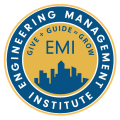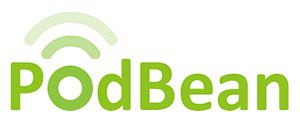In this episode, I talk with Zack Kovacs, regional operations manager at Menard USA, about managing risk in ground improvement projects, from unpredictable soils to underground obstructions and logistics, offering practical strategies AEC professionals can use to boost efficiency and avoid costly delays.
***The video version of this episode can be viewed here.***
Engineering Quotes:
Here Are Some of the Questions I Asked Zack:
- What are the biggest risks you typically face in ground improvement projects, and how do you deal with them early on to avoid problems later?
- How do you manage the trade-off between efficiency and risk when working with challenging soil conditions?
- What steps do you take to handle underground utilities and obstructions while keeping your ground improvement project on time and within budget?
- How do you plan for logistics like space, equipment, and material delays—especially when working on tight sites with limited time and budget?
- What do you consider when designing working pads to make sure your equipment is stable and your site stays safe?
- What’s one major project management mistake you often see in the industry, and how can PMs avoid or overcome it?
Here Are Some Key Points Discussed in This Episode About Effectively Managing Risk in Ground Improvement Projects for Better Results:
- The most significant risks typically come from unknown subsurface conditions. Reviewing geotechnical reports and historical site imagery early in the process helps identify potential issues in ground improvement projects and reduce costly surprises.
- Balancing risk and efficiency starts with a strong understanding of site conditions. Using adaptable equipment allows teams to respond quickly to unexpected ground variations without major delays in ground improvement projects.
- Effective strategies include combining geotechnical data, civil plans, and site history to assess risks. Planning for utility locations and having pre-drilling solutions in place ensures ground improvement project work continues without unnecessary stoppages.
- Strong logistics planning involves clear coordination with all parties and alignment on expectations. Early communication with vendors and flexible equipment use help prevent delays and keep ground improvement operations running smoothly.
- Working pad design must account for soil strength, equipment weight, and future grade elevations. A stable platform ensures machinery operates safely and minimizes the chance of ground failure or accidents during ground improvement projects.
- A common pitfall is failing to ask enough questions early in the ground improvement project. Clarity around site access, nearby hazards, and team roles leads to better planning and fewer conflicts later in the process.
More Details in This Episode…
About Zack Kovacs

Sources/References:
Menard USA
Google Earth
Ground Penetrating Radar
Connect with Zack Kovacson LinkedIn
Please leave your comments, feedback, or questions in the section below.































